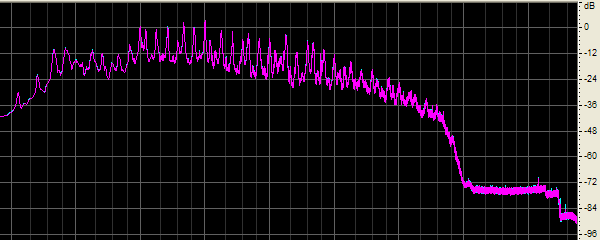Look at the following graph. It shows the frequency balance of a musical section in a 1951 cartoon, ‘Symphony in Slang’, which appears on the Warner Bros Blu-ray release of An American in Paris.

The scale on the right shows the decibel level, while the one on the bottom shows the frequency.
Whoops! I cut off the bottom scale! Well, take a guess. What are those divisions? We’re talking 1950s here, so don’t be too demanding.
Here’s the answer: the thicker vertical lines mark, from the left, 55 hertz, 110, 220, 440, 880, 1,760, 3,520, 7,040 and 14,080 hertz. That’s because of ‘The Academy Curve‘, an audio standard settled upon in 1938 by the Academy of Motion Picture Arts and Sciences. This frequency response restriction was employed to limit the noise from optical soundtracks and was maintained in movies up until the early 1950s. As you can see, the high frequencies above about 5.5kHz are simply not there at all.
I used this cartoon, rather than the movie, because in the latter it’s clear that some attempt has been made to resurrect its higher frequencies. But had you gone to the cinema back in 1951 to see the movie, Academy Sound is what you would have heard, even for the movie.
